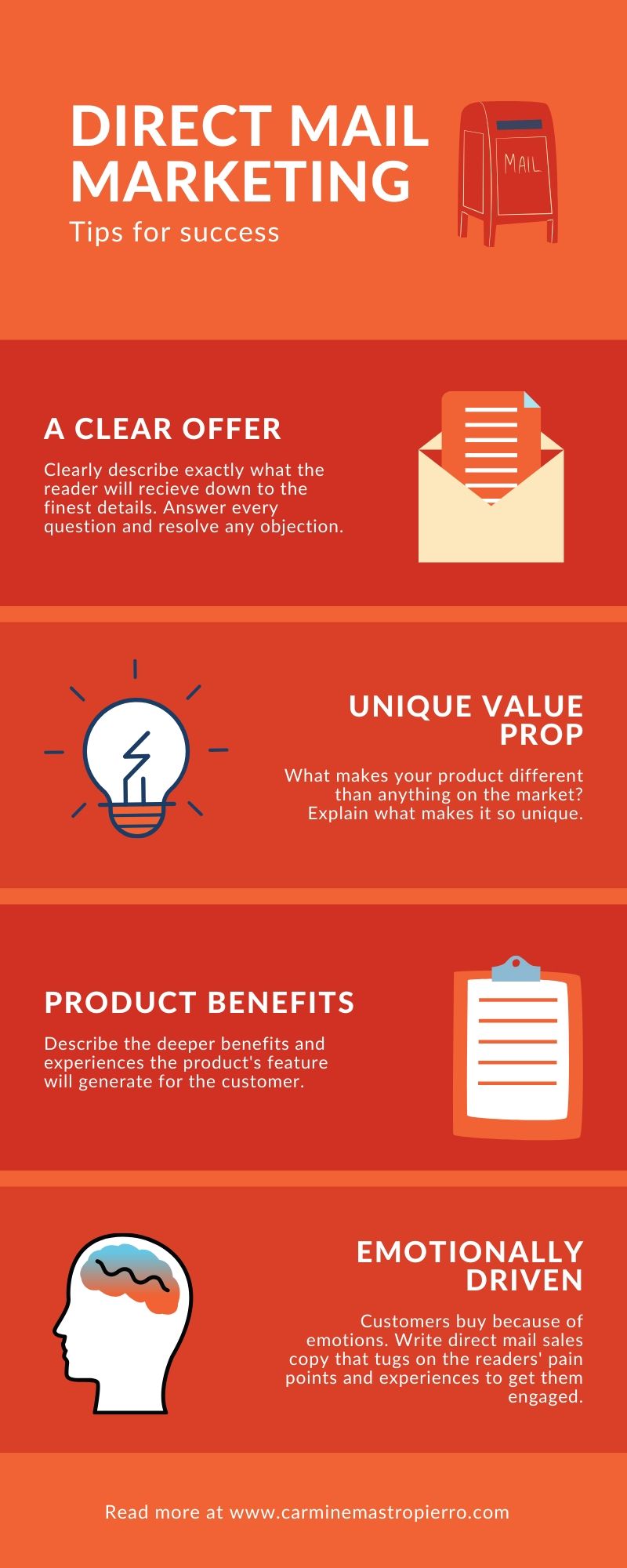Did you know that there were over 150 million pieces of direct mail sent out in 2015 alone?
42% of the recipients opened the mail, as well.
What does this tell us?
Direct mail marketing is NOT dead. ❌
It’s still a very effective strategy for acquiring clients and generating sales.
It doesn’t matter if you run a digital agency, e-commerce company, or consumer brand. Everyone can benefit from using direct mail.
That’s why today you’ll be learning about direct mail copywriting strategies, case studies, costs, and more.
Let’s get into it!
What is direct mail marketing?
Direct mail marketing is the process of mailing recipients offers, coupons, or sales letters directly to their physical mailbox.
We’re so used to being bombarded with emails these days that it’s hard to remember the last time we received a promotion via letter.
It has been the go-to strategy for companies around the world for decades.
Before the crazy thing called the internet, direct mail was one of the best ways to reach customers. Besides radio or television, there weren’t many other options.
Now there’s Facebook, Pinterest, Instagram, Google, Twitter ads, and unlimited paths to take.
Let’s talk about how much direct mail costs, so you can get a better idea of what you’ll need to invest.
Direct mail cost
There’s no cookie cutter way to approach direct mail.
You need to brainstorm the goals, budget, and other areas of your business to decide which route is the best.
The three big factors to consider are:
- Budget: How much are you willing to spend? Those with smaller budgets will have to send out less mail and may have to opt for small catalogues or designs.
- Audience: Do you have a narrowly defined target audience? Are you planning to send mail to previous customers to promote repeat purchases? Depending on who you’re selling to will also determine costs, as cold leads require more material to convert versus those already knowledgeable about your brand.
- Product: What you are selling will need to align with the packaging and design of the mail you send. A formal letter would be appropriate for business services for example, while a colourful and casual letter would be suitable for children’s products.
A study by MobileCause found that direct mail tends to have the best results, specifically regarding open rates, when it’s mixed with other strategies.
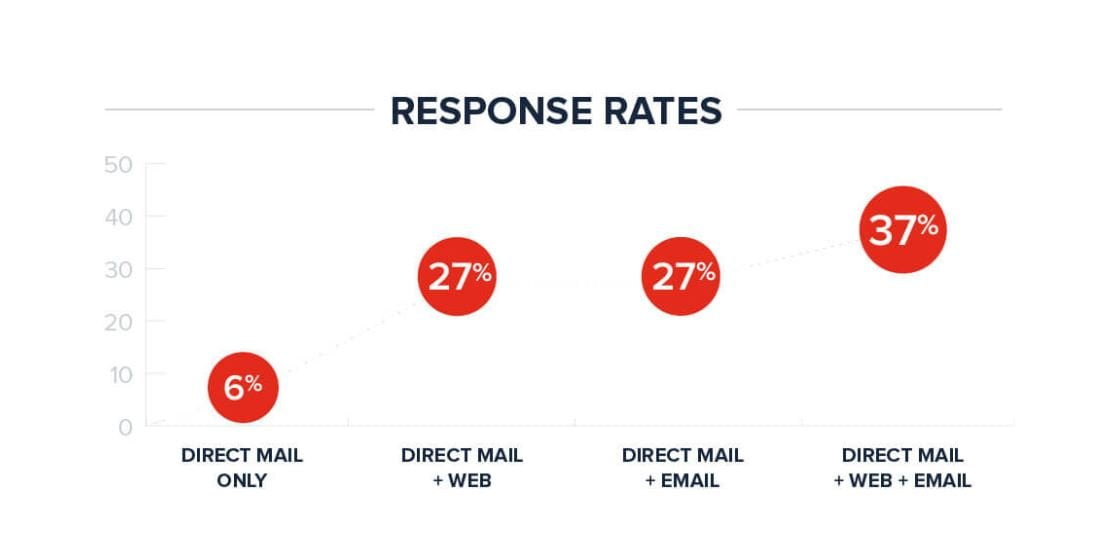
This means that you will want to ensure that you have a well-balanced marketing strategy that consists of direct mail, email, and a website.
Collect emails with a tool like Mailchimp and learn the basics of inbound marketing if you’re not already practicing it. Doing this with direct mail on the side will yield the best results.
With that being said, let’s talk about what goes into the cost of direct mail campaigns. 💰
Designing direct mail marketing material
Visuals are a huge component of successful direct mailing. Without a properly designed letter, brochure, etc, you won’t capture the attention of readers or impress them.
And that means it’ll get thrown in the trash. 👎
Those with basic design skills shoulder consider lowering costs by creating advertisements by themselves. There are also templates available online that you can use to save time and energy.
I’d recommend using a free tool like Canva. They have pre-made direct mail designs that will give a good boost to any campaign.
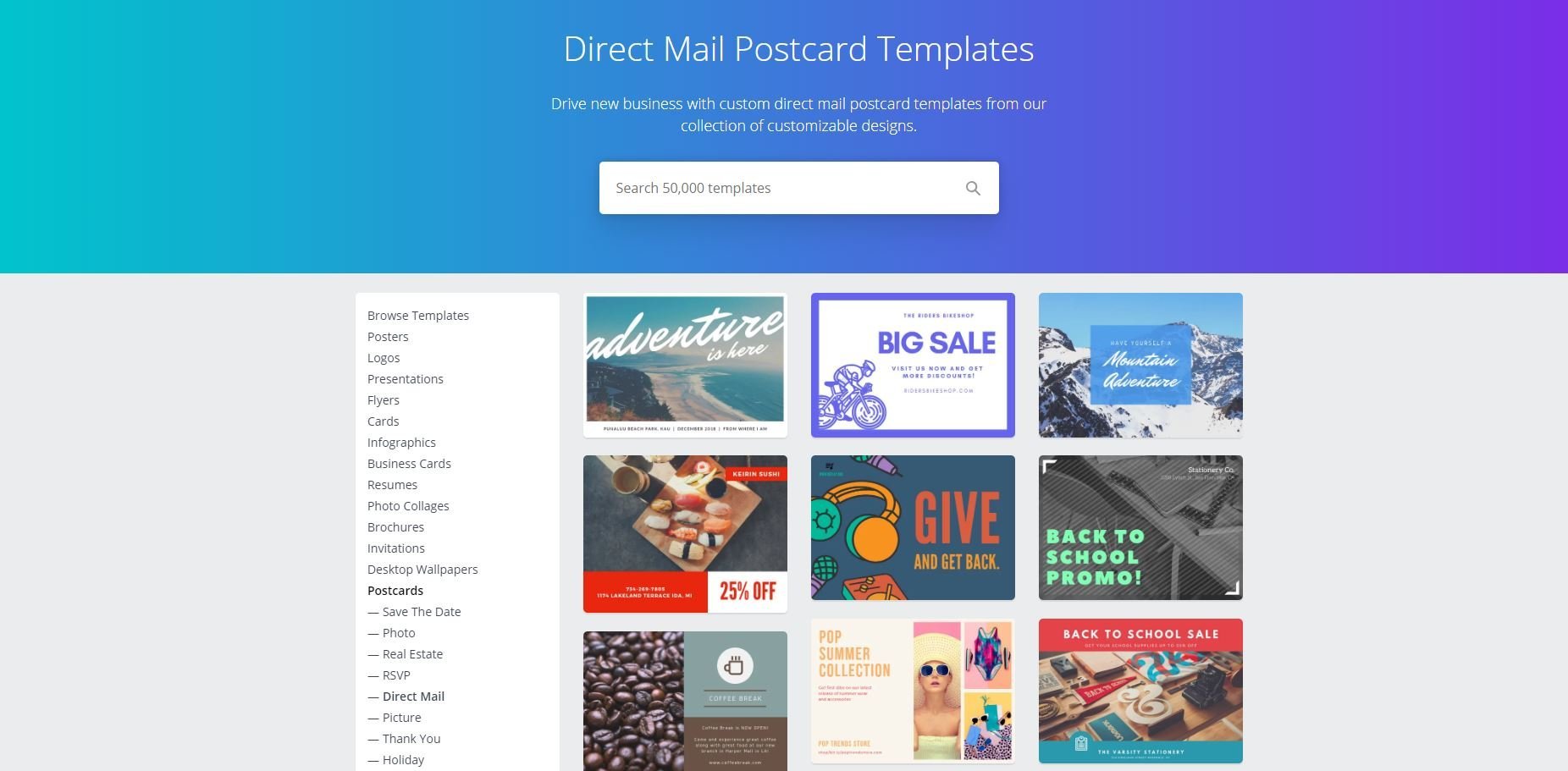
The last route would be to outsource the design to a freelancer or agency. Take 99designs for example.
They offer direct mail designs for $269, $399, $799, $1,299 with different packages.
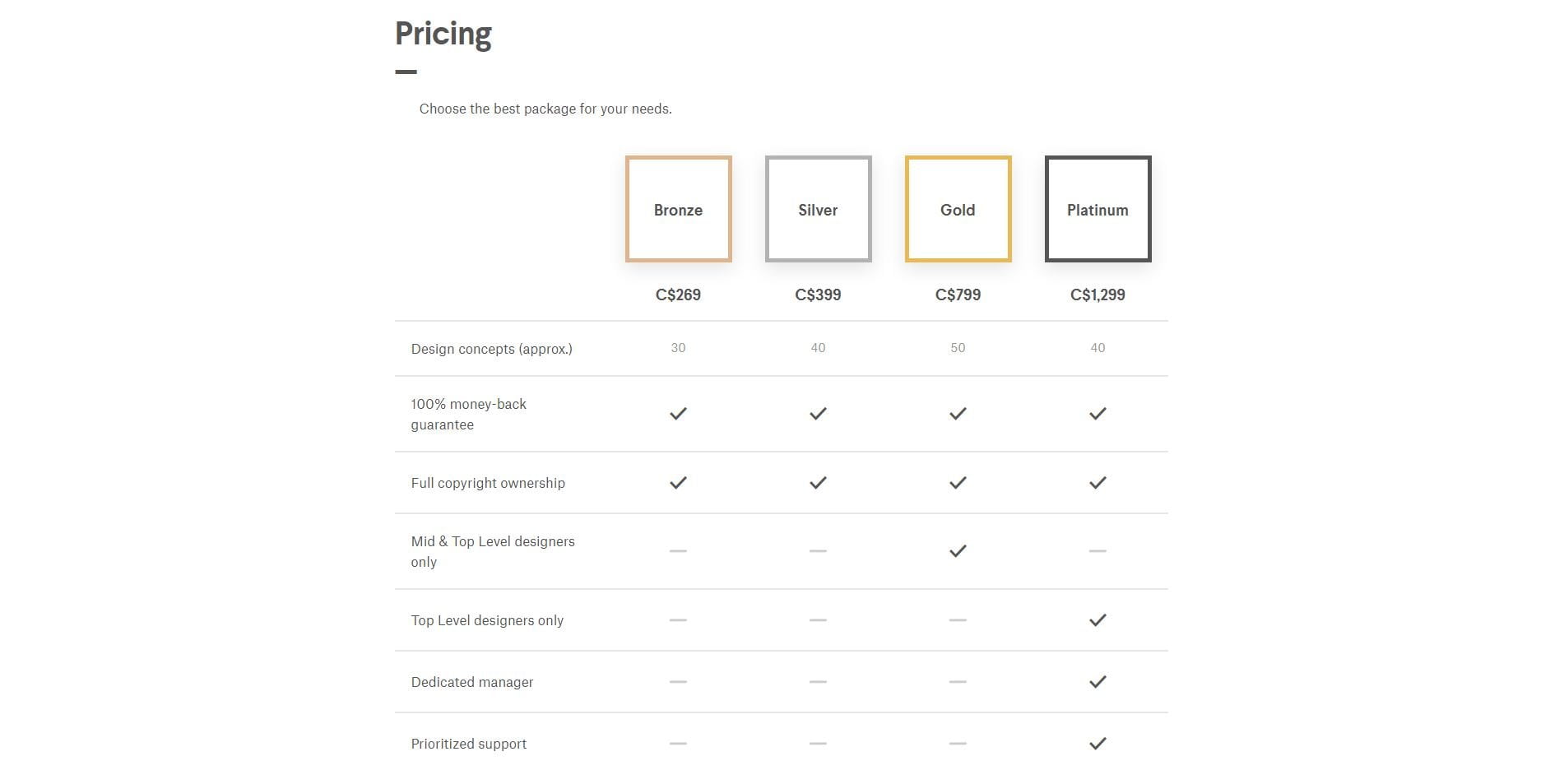
That brings me to my next point.
Direct mail copywriting
The most important element of direct mail material is the sales copy. This is why you need to hire a copywriter, such as myself, to ensure that you have direct mail copy that converts.
It’s easy to think that you could muster up a couple of thousand words and call it a day, but great copywriters understand the science of what sells.
They use storytelling, calls to action, and other strategies to make the customer drool at the mouth before taking out their credit card.
Avoid cheap writers as the results will be very poor. There’s a reason that good copywriters charge higher rates: they deliver results.
Sorry to say it, but you’re not going to find a writer worth your while that charges $10/hour or minimum wage. You need to spend money to make money.
Check out my copywriting rates if you need a freelance direct mail copywriter.
These are tips for spicing up your own direct mail copywriting in the meanwhile:
Write 100 different headlines
David Ogilvy, the man behind some of the world’s most famous ads, would write up to 100 headline ideas for every campaign.
No joke.
He coined the famous quote “You’ve spent 80 cents of your dollar once you’ve written the headline.”
This is because it’s the first thing the reader sees.
If it’s good, they’ll stick. If not, they’ll lose interest.
This is one of many legendary advertisements he wrote:
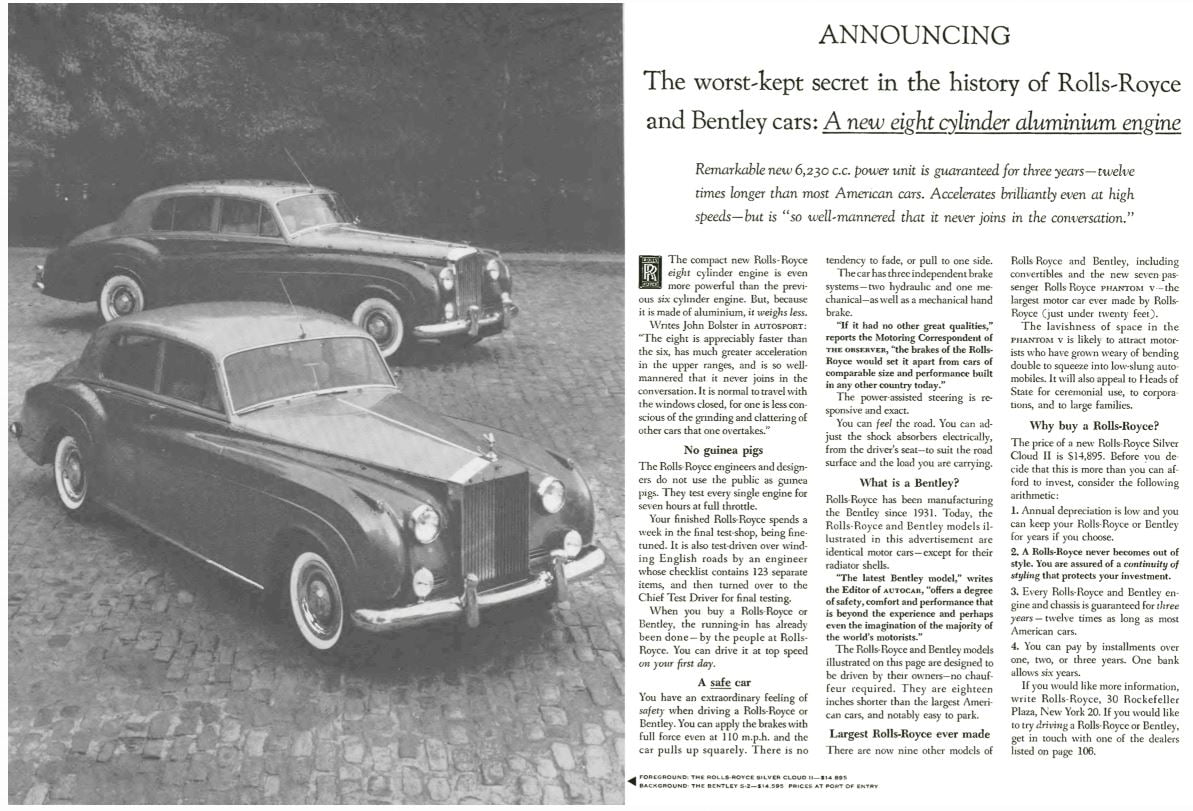
“Announcing” instantly paints the picture that something important and new is about to be spoken about, piquing readers’ curiosity.
The headline and sub-headline introduce “A new eight cylinder aluminum engine” that “is guaranteed for three years—twelve times longer than most American cars. Accelerates brilliantly even at high speeds—but is ‘so well-mannered that it never joins in the conversation.”
This communicates the unique value proposition: an engine that lasts longer (saving the customer money), has better performance and isn’t overly loud.
See how powerful headlines are now?
Here are some effective headline strategies you can use yourself:
- Urgency: “You’ll Never Scale Past $1M ARR If You Don’t Know This Strategy”
- Curiosity: “How This Entrepreneur Made $100,000 in 26 Days”
- Useful: “8 Practical Steps to Building Passive Income in 15 Minutes Per Day”
- Ultra-specific: “How to Lose Up To 30 Pounds in 4 Months With The Keto Diet”
- CTA: “Keep Reading This Letter to Learn X, Y, Z”
What’s the promise?
Every direct mail campaign needs a promise.
Think of it as the deeper benefits and experiences the customer will gain from the product.
…More financial stability.
…More confidence and self-esteem.
…More business opportunities.
You get my point.
The promise is the primal reason why the reader is interested in the first place.
Sure, you can talk about all of the cool technology and gizmos that go into what you’re marketing but people convert on emotion.
Feelings. Thoughts. Imagination.
This is a sales letter from Ryan Deiss offering “the ULTIMATE Marketing Shortcut… …FOR JUST $1.”
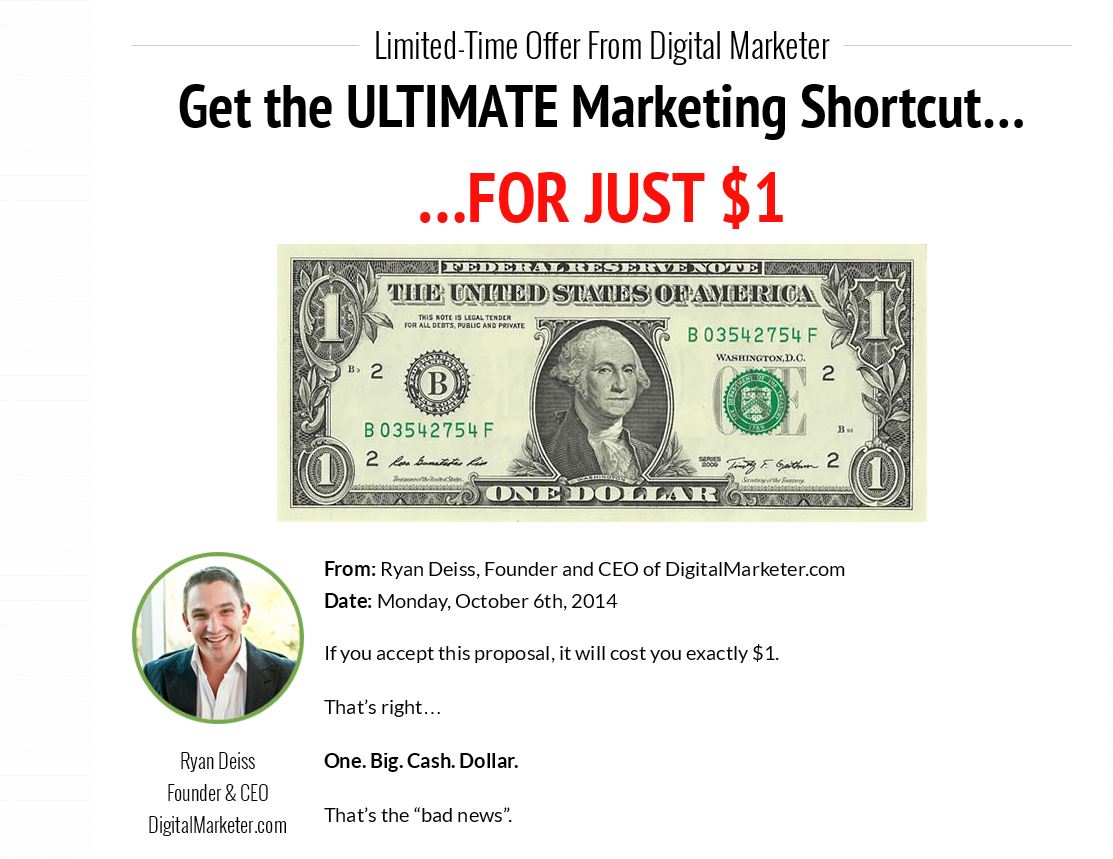
The promise is delivered directly in the headline.
Ryan elaborates on it in the second section saying for a minuscule investment the reader will gain access to a secret marketing vault.
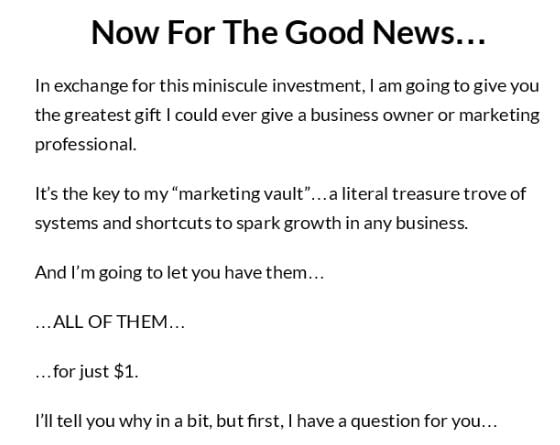
Granted, you have to keep the promise too.
If you hype up something and make it sound like the coolest thing since sliced bread, don’t leave the reader hanging later. Deliver it and more.
Testimonials skyrocket conversions 🚀
If you want to maximize the success of your direct mail campaigns, you need social proof.
Customers want to see that they can trust you and that your offer does what it says it will.
How can you accomplish this?
Customer testimonials.
These are statements or examples of previous customers and their great experience with you.
88% of consumers say that reviews influence their decision to purchase. It’s one of the first things they look for.
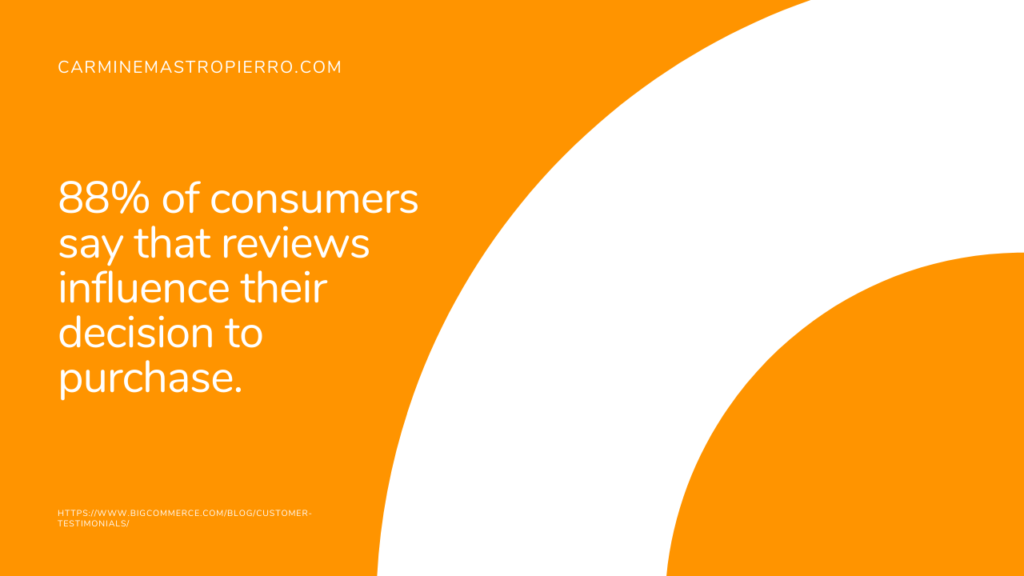
Firstly, ask customers if they’d be kind enough to give you a sentence or paragraph testimonial and permission to use it for marketing purposes.
Include them in your direct mail letter to back up claims and what the product is capable of achieving.
This will make readers feel at ease and comfortable buying from you.
Mailing lists
Obviously, you will need a list of recipients to perform direct mail marketing. This means that marketers will need to invest in a mailing list unless they already have one they’ve created.
Researching various mailing list companies, I found that they mostly require you to submit an application for a quote. This is because every business and campaign has different needs, so pricing fluctuates accordingly.
However, I did come across websites like Leadiro that have flat rates, as you can see below.
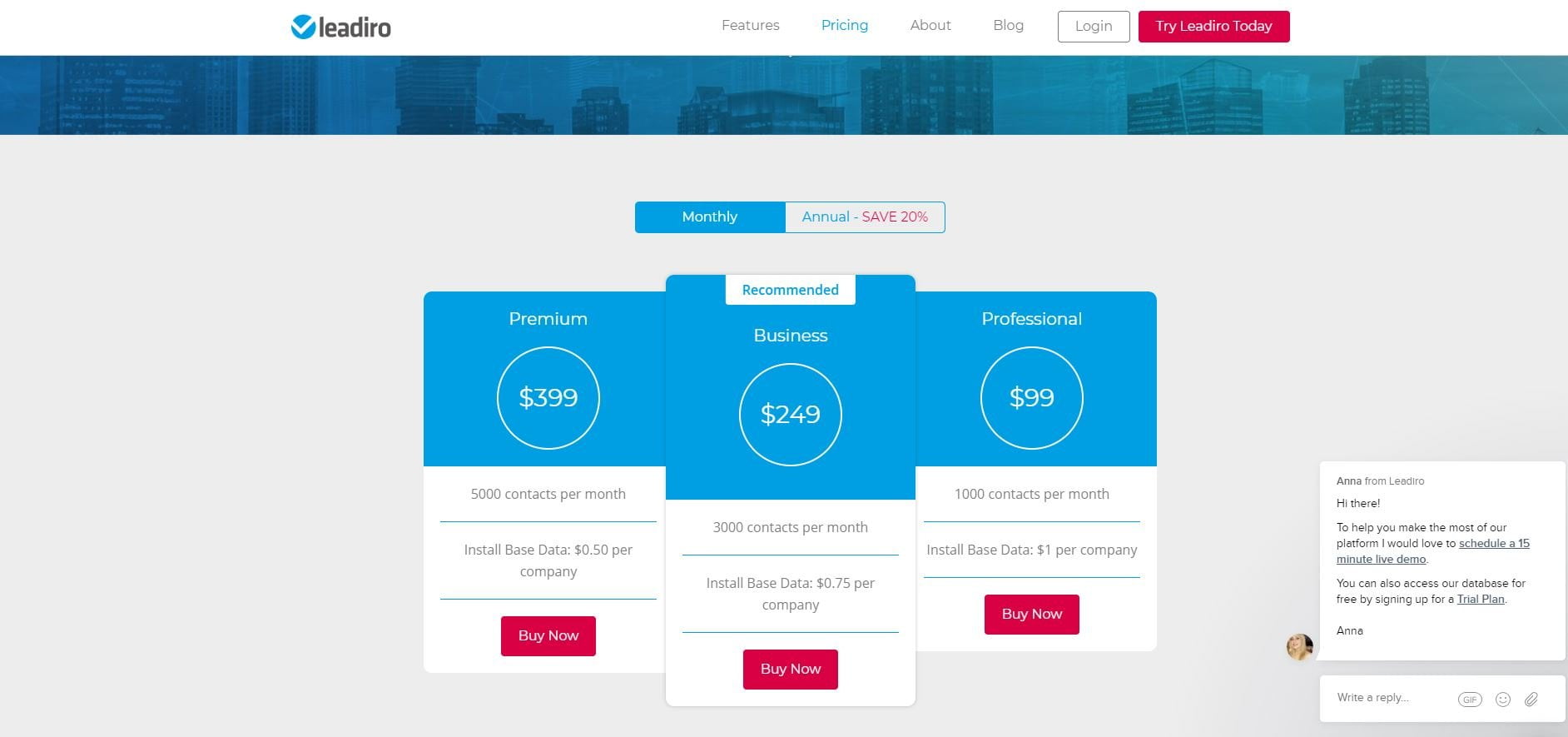
It’s not uncommon to invest thousands of dollars for an email list because the ROI could be much greater.
Nothing beats having your own personal list.
These are individuals that already know about your business and may have purchased products from you in the past.
Recently I read Russel Brunson’s book DotCom Secrets and he had an awesome section on the principle of traffic temperature.
The prospects you send campaigns can be placed into three buckets:
- Cold: These are people that aren’t aware of your business or offer. They need problem-solution focused direct mail copywriting and messaging. Help them become more aware of the pain point they are experiencing and what can be done about it.
- Warm: Individuals that have opted in to your list or have interactions with your business in the past. Offer these prospects lead magnets (like reports), cheaper products, tripwires, etc.
- Hot: The big enchilada. Customers that have already made purchases. Send these individuals your newest, latest, and best offers. You can be very direct (no pun intended) with sales.
Printing
This isn’t an email. That means you have to get your catalogues, letters, etc. physically printed. How much you will spend depends on:
- The quantity of what you’re printing.
- The size and quality of the paper you’re printing on.
- Whether or not you use colour or only black ink.
Over 50% of people open direct mail which is DOUBLE the open rate of email.
The investment can have a massive ROI so I urge you to find a talented direct mail service provider. They offer services like:
- Data cleaning so you target the highest quality leads and generate more revenue.
- Graphic design to represent your brand professionally and increase engagement.
- Sorting, sealing, and filling envelopes.
- Postal code and neighbourhood targeting for the best response.
- And more.
Distribution
The final step of any direct mail campaign is to send out the marketing material.
This, of course, requires you to pay distribution costs, which depend on postage prices, weight, and other factors.
Consult with a local mailing branch to get an estimate of how much your campaign will cost.
Or, if you outsource it, a direct mail marketing agency will happily take care of this for you.
You can kick back and have your direct mail offers sent out without all of the hassles.
Benefits of direct mail marketing
Now that you understand what direct mail is and how it’s priced, I’d like to educate you on the benefits of using this an advertising channel.
Targeting is very specific
Whether you collect your own mailing list or purchase one, it results in marketing campaigns that are highly targeted.
If you have a very strict buyer persona and understand your ideal customer deeply, direct mail can be extremely lucrative.
You aren’t sending mail to random people in hopes that they will buy your product. It’s being received by qualified leads that have a much better chance of converting.
This is especially the case when you build up a quality list of subscribers over time.
They are a private audience you can tap any time to promote products, services, and generate leads.
It’s measurable
Imagine you sent out 1,000 flyers for the total cost of $5,000, and it resulted in 100 sales worth $50,000. That’s 10x your money, and it’s all thanks to direct mail advertising.
Being able to track and measure a marketing campaign is often a hurdle for businesses. Direct mail bypasses this because the material sent out could include a special discount code or coupon exclusive to the campaign.
Similarly, it may be one of the only ways a business markets itself, so it’s simple to see the impact it’s having on sales.
Once it starts having a positive ROI, start ramping up spending and sending out material to keep the revenue coming in.
Personalization
With the personal information of leads and a clearly outlined buyer persona, direct mail becomes heavily personalized.
Your campaigns aren’t junk mail that gets thrown away. Since they resonate with customers, the mail is more likely to be opened and looked at in a positive way.
You will be able to write copy, create images, and offer a product that relates to their interests.
Additionally, 71% of consumers feel frustrated when shopping experiences aren’t personalized.

It makes them feel like a cog in the wheel. Another number in the system.
By tailoring the sales copy and offer to a small crowd, not only does revenue take a jump but people are much more satisfied.
Direct mail advertising strategies
Here are some of the most tried and true strategies for producing direct mail ads that convert.
Make them use their imagination
When you pick up a piece of paper and read an ad, it can be difficult to imagine a product or service. This is why as a marketer you need to use words to paint a picture in the customer’s head.
Describe the product being used in vivid detail down to the emotions and thoughts a customer would have.
Look how Ferrari pulled this off in an ad for their 458 model.

The headline, “Own it, Drive it, Live it.” sums up the idea of having a supercar in one line. It’s an emotional experience, not just a vehicle.
Moving into the actual copy, Ferrari uses the strategy of invoking imagination with the lines “The car of your dreams is now the car of your reality. Introducing the unique Ferrari 458 Italia. With head-turning styling, neck-snapping acceleration and the indescribable but incredibly potent Ferrari allure, the 458 Italia supercar is one of the most desirable rides on the market.“
When you’re writing the copy for a direct mail ad, tell the story of using the product through the eyes of a customer. What will they experience? What feelings and thoughts will they have? These are questions marketers need to ask themselves.
Include a call to action
Copy without a call to action is like icecream without a cone. What’s the point?
Calls to action are statements that tell customers to take to next logical step in the sales process.
This could be visiting a website, placing an order over the phone, filling out a form, or similar. It will depend on the exact goal you’re trying to achieve with the individual campaign.
CTAs can be placed all throughout direct mail as well.
For example, you may have an early call to action to read the letter to learn about X, Y, and Z.
Later on, you can tell the reader to buy the product if they want to experience certain benefits and emotions.
Finally, there may be a call to action for purchasing the product and how to order.
Fear of missing out
Fear of missing out, or FOMO for short, is a social phenomenon that all humans experience from time to time.
It is the fear that we will miss out on a great opportunity if we don’t take action soon enough. 😱
As a direct mail marketer, you can use this to your advantage.
Consider framing an ad as urgent using phrases or words like:
- Act now
- Quickly
- Hurry
- Today
- Limited time offer
- Low inventory
- While supply lasts
- Last chance
- Once in a lifetime
- Prices are going up
You can also position offers as being time-sensitive. Give customers a product or discount that only lasts a certain amount of time. They will literally have to take action before it’s gone.
Live events and online programs are perfect for FOMO marketing too. Emphasize that there are only a certain amount of seats left and the customer needs to lock theirs in soon.
Align images with copy
Images need to be used strategically in all forms of advertisements. Focus on using images that enhance sales copy and allow the customer to picture themselves using the product.
Pictures will support sales copy and vice versa. It helps bring more power to your words and make advertisements less boring.
Look at Nike, for example. They showed a woman running with their Aeroloft vest in an ad for it.

It helps you see what the product looks like and how you would appear wearing it. Since they target an athletic crowd, people can resonate with the idea of exercising too.
Photos can also be used to target customer’s pain points. Show a photo of someone experiencing a problem that relates to the reader’s experience.
This will help them harmonize with the advertisement and increase response when a solution is presented.
Focus on the benefits, not just the features
It’s a newbie mistake to write copy that only focuses on the features of a product. Features are factual pieces of information, such as material, colour, or sizing.
Benefits are the emotional and experiential gains that a customer gets out of using the item. For example, continuing off of Nike’s ad above, benefits of their new vest might include:
- It will keep you warm when outside in the cold weather.
- It’s lightweight and layers easily with other clothing.
- It’s fashionable and makes you look better while exercising.
Try taking the features of the product you’re selling, and elaborate on what the exact benefits are. That is what the customer truly cares about: how it will change their lives and solve their problems.
Direct mail marketing example
Alright. Let’s dive into the nitty-gritty of a direct mail example.
I’ll touch on the techniques they used and how you can apply them to your next campaign.
Upstart’s credit card offer
The peer-to-peer lending service Upstart began offering credit cards and loans to millennials and this was one of their direct mail promotions:
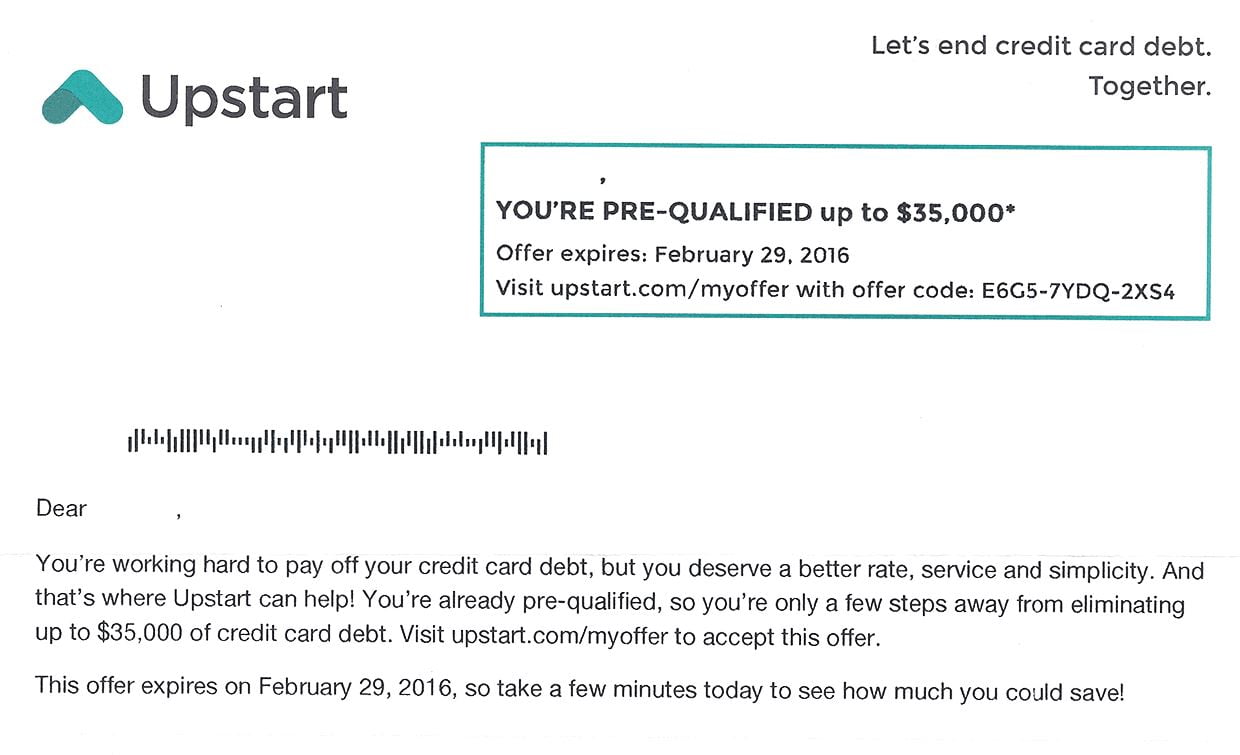
The small headline reads “Let’s end credit card debt. Together.” which resonates with millennials who have some form of credit card debt. This also serves as a call to action.
Below this, a box states the reader is pre-qualified up to $35,000. This offer expires to create urgency and another call to action is presented.
The introduction targets the reader’s pain point of working hard to pay off debt and feeling deserving of better rates and services—exactly what Upstart presents along with a cost-savings proposition.
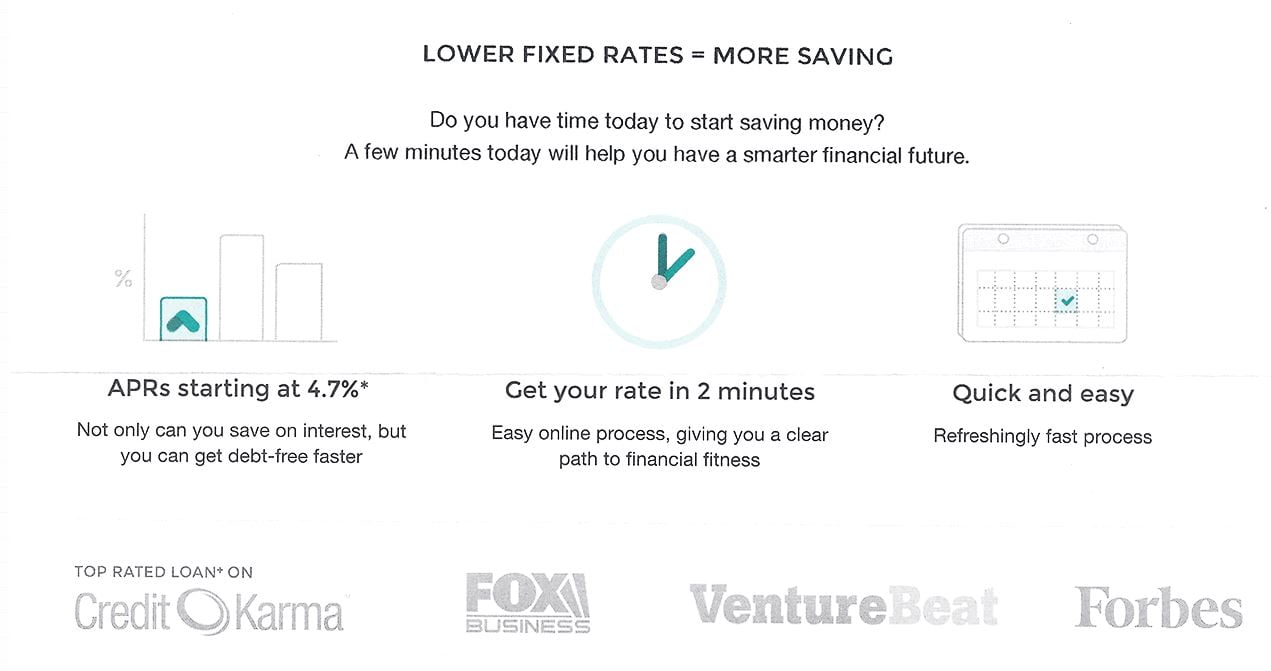
The benefits are elaborated on further such as saving money, having a better financial future, becoming debt-free faster, and an easy online process.
Forbes, Fox, and other big publications are listed to build social proof and authority.
Upstart summarizes the offer at the end by restating the loan amount, APR, and expiry date with a final call to action.
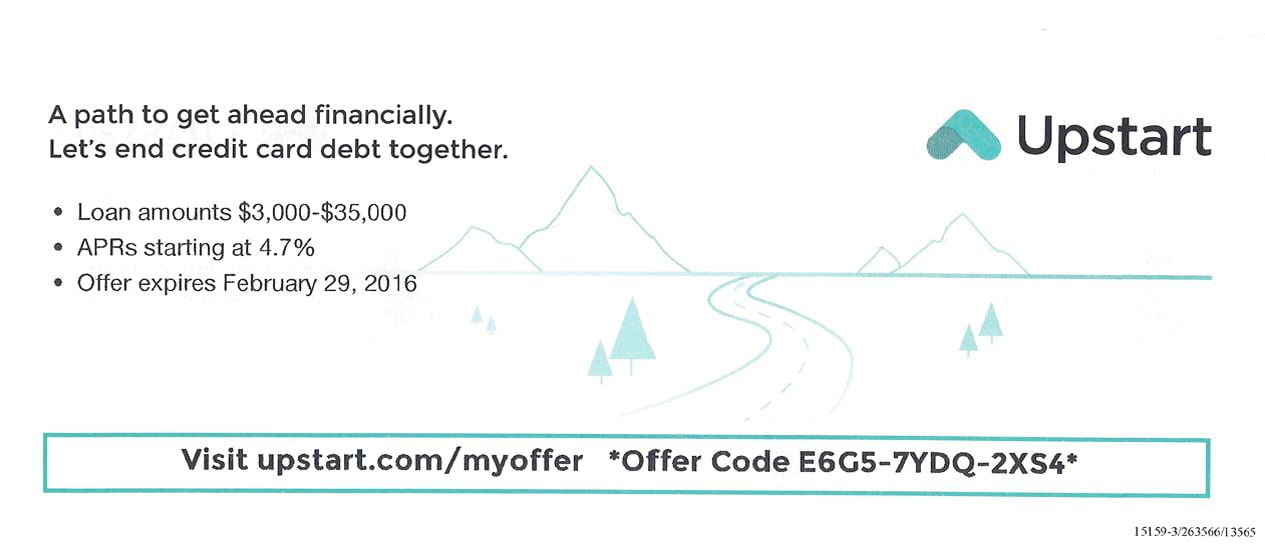
Do you know why I really love this example?
They use the fundamentals. They keep it simple.
There’s a clear offer targeted towards a hypersegment, plenty of calls to action, product benefits, testimonials, social proof, and emotional sales copy.
It’s the perfect recipe to generate sales.
Eugene Schwartz Boardroom letter
This is a direct mail letter written by legend Eugene Schwartz. It’s a four pae sales letter for Boardroom Publications selling a subscription to Boardroom Reports.
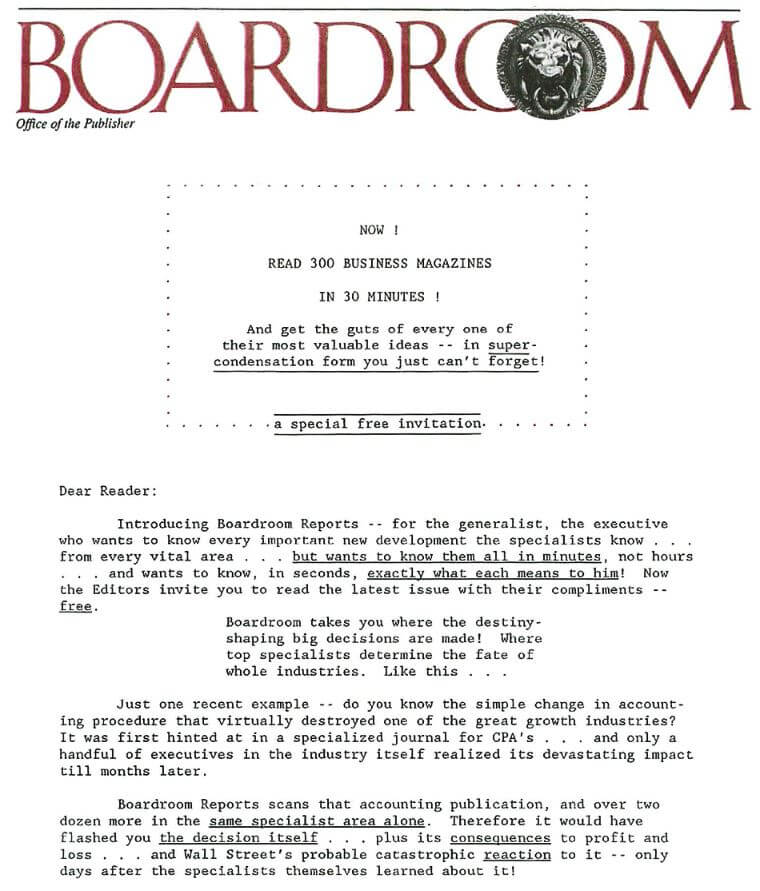
The header looks very professional and the red text contrasts with the page.
Eugene uses a benefit-driven headline telling readers they can read 300 business magazines in 30 minutes.
It also creates a sense of curiosity. People will think, “How can I do that?”
The subhead follows up the main benefit explaining readers can get the most valuable ideas from magazines and not forget them.
It’s also positioned as a “special free invitation.”
The sales letter begins by addressing the audience and what they want—generalists and executives who wish to know every important business development.
Then, Eugene gives an example of how not having access to the information in the report can cause negative consequences. This creates a sense of urgency.
There are three more pages with the following headlines:
- “How to hire people without making mistakes”
- “How to speed up an insurance claim when you’re getting the runaround”
- “Customers pay fast if one magic sentence is added to the bill”
Each of these provides a benefit and the third uses curiosity to get the reader continuing down the page.
By gradually mentioning Boardroom Reports, Schwartz takes advantage of a neurolinguistic programming technique called priming.
This gets a certain topic embedded in the mind of readers so they look forward to it later.
The end of the sales letter positions Boardroom Reports as innovative as the Wall Street Journal was in the 1980s.
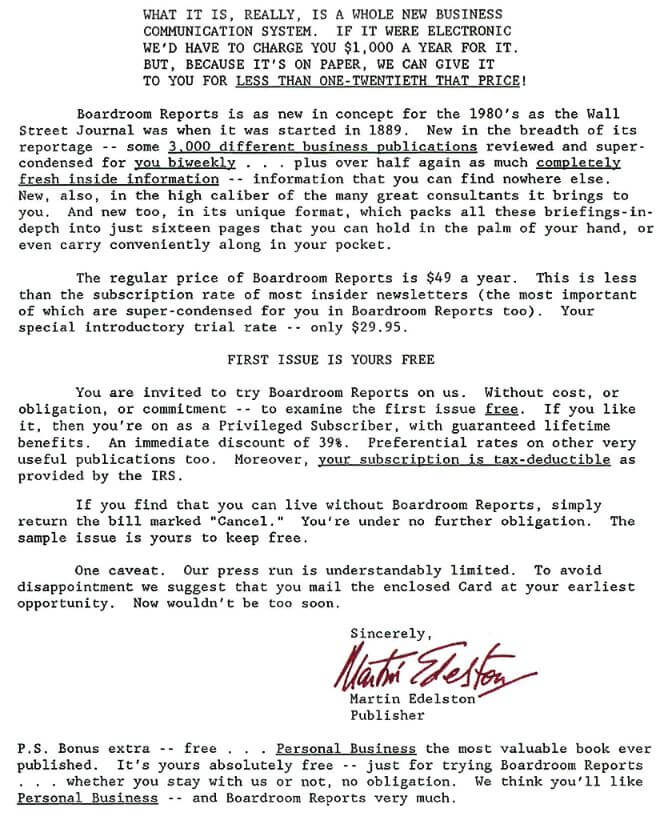
They make a huge promise claiming there are over 3,000 different publications reviewed and condensed biweekly for the customer to consume.
A price reduction offers a cost-savings value proposition along with a free issue and cancellation guarantee.
Note how they say their press run is limited and to avoid disappointment, you should order as soon as possible. That’s more urgency and scarcity.
Funnel Hacking Live
I mentioned Russel Brunson earlier. While he’s the king of everything digital, Russel still uses direct mail like this letter for his Funnel Hacking Live event.
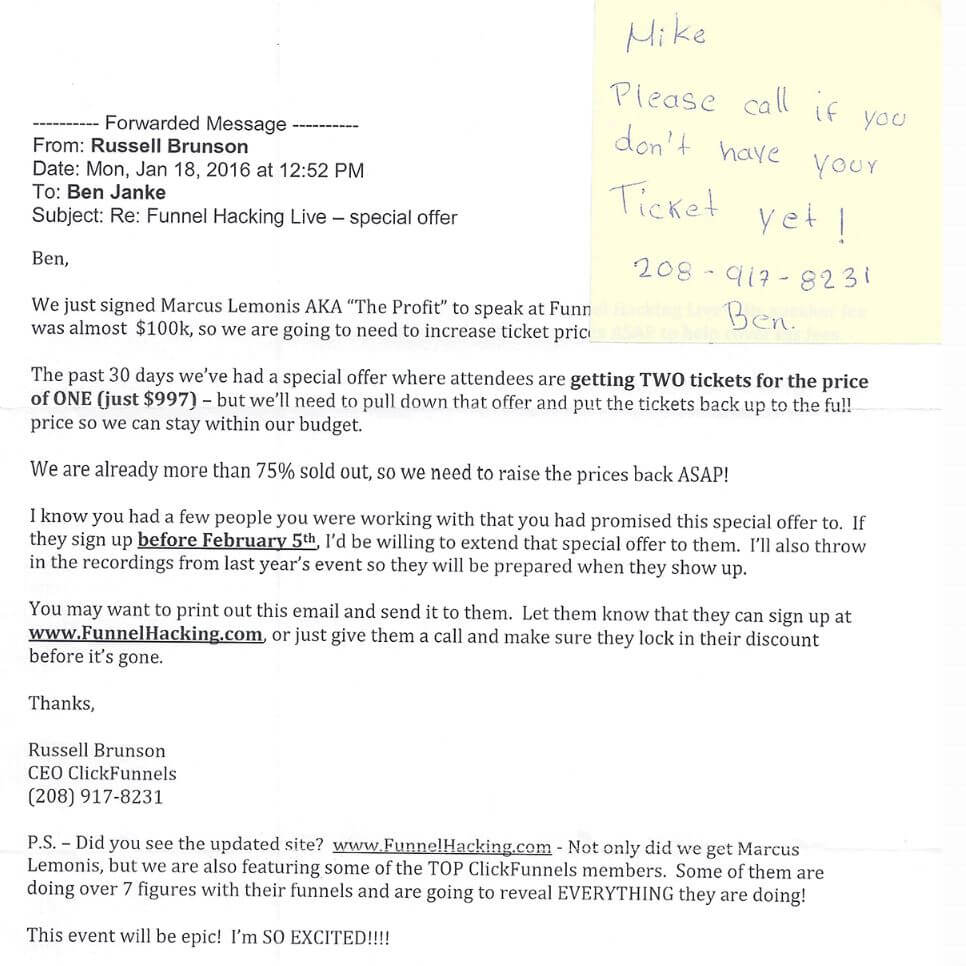
The first thing you’ll see is a handwritten note attached to the letter. This makes it much more personal, almost like a friend speaking to a friend.
The opening line addresses the recipient (personalization) and creates urgency by saying the price for Funnel Hacking Live is going up. ☝
Customers can get two tickets for the price of one but it won’t last long as they need to increase the raise and 75% have already sold out.
Russel adds the bonus of last year’s recordings if the readers get someone else to sign up for the special offer before a specific date (more urgency).
A call to action is used telling readers to call guests to lock in their discount.
It sign’s off with a P.S. for checking out the updated website where more useful information can be found.
Note how all throughout the sales letter, Russel speaks in a casual and first-person tone of voice.
The offer comes off more genuine that way.
Wrapping up direct mail copywriting and marketing
Direct advertising can have a great ROI, and could be the strategy you’ve been looking for.
It is one of the oldest forms of marketing, yet still holds its weight in modern times.
The cost of this will depend on design, quantity, distribution, printing, and other aspects. These can be lowered by doing some grunt work and completing it in-house.
The benefits of direct advertising include its personalization, precise targeting, and the ability to be measured easily.
In terms of how to write direct mail, I would recommend painting a picture in the customer’s head by detailing exactly what they will experience by using your product. Reference back to the Ferrari ad I displayed earlier as an example.
Always include a call to action at the end of the ad, as well. Without one, customers could easily throw away the mail because you forgot to tell them what to do next.
Using urgent words and phrases throughout the ad can entice customers to take action sooner, as well.
Lastly, one of the most staple marketing strategies of all time us to focus on the benefits of what you’re selling. These are the experiences and emotions that a customer will have by using the product.
Need a direct mail copywriter? Reach out to me for a free consultation.
